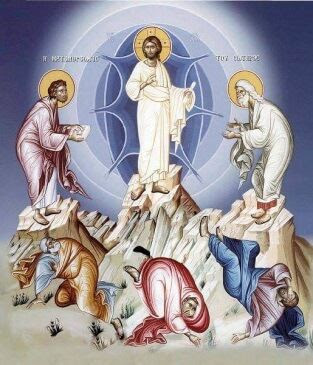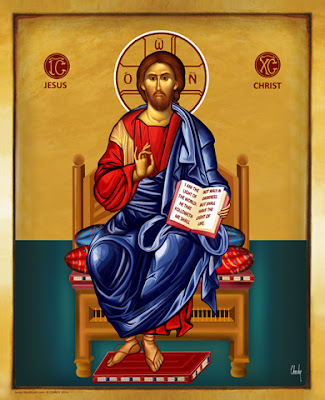“Well Written”: Icon of the Week, Vol. 2 | Our Lord is Brilliantly Transfigured on High

It's no accident that the first reading for the second Sunday of Lent (Year B) is the testing of Abraham's faith. Genesis chapter 22 begins: "God put Abraham to the test. He called to him, 'Abraham!' 'Here I am!' [Abraham] replied. Then God said: "Take your son Isaac, your only one, whom you love, and go to the land of Moriah. There you shall offer him up as a holocaust on a height that I will point out to you." "When they came to the place of which God had told him, Abraham built an altar there and arranged the wood on it. Then he reached out and took the knife to slaughter his son. But the LORD's messenger called to him from heaven, 'Abraham, Abraham!' 'Here I am!' he answered. 'Do not lay your hand on the boy,' said the messenger. 'Do not do the least thing to him. I know now how devoted you are to God, since you did not withhold from me your own beloved son.' As Abraham looked about, he spied a ram

